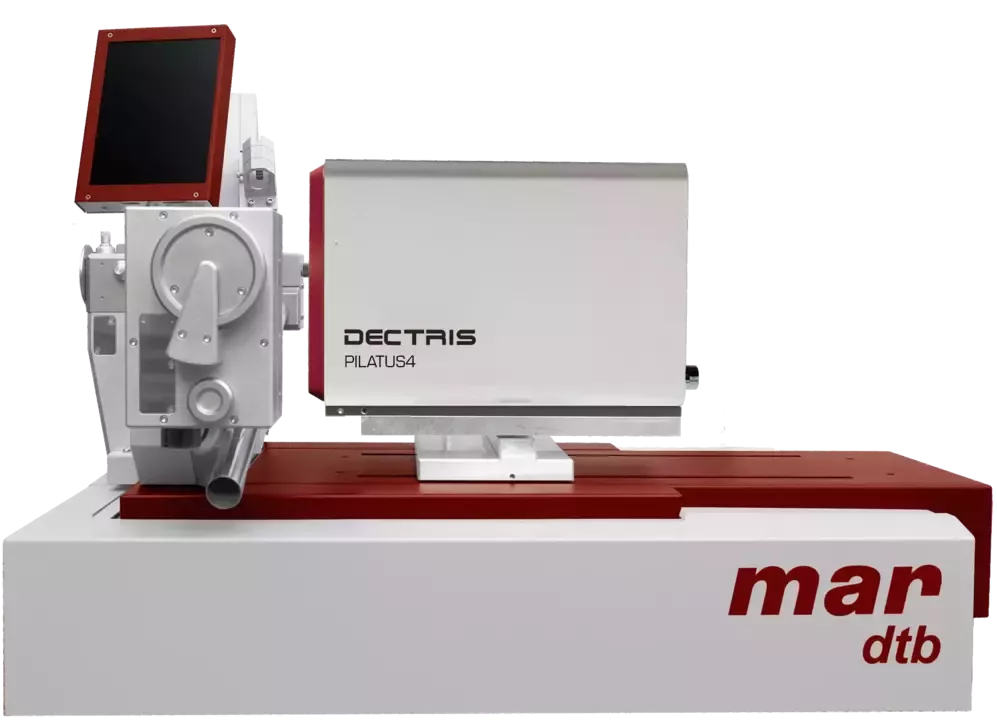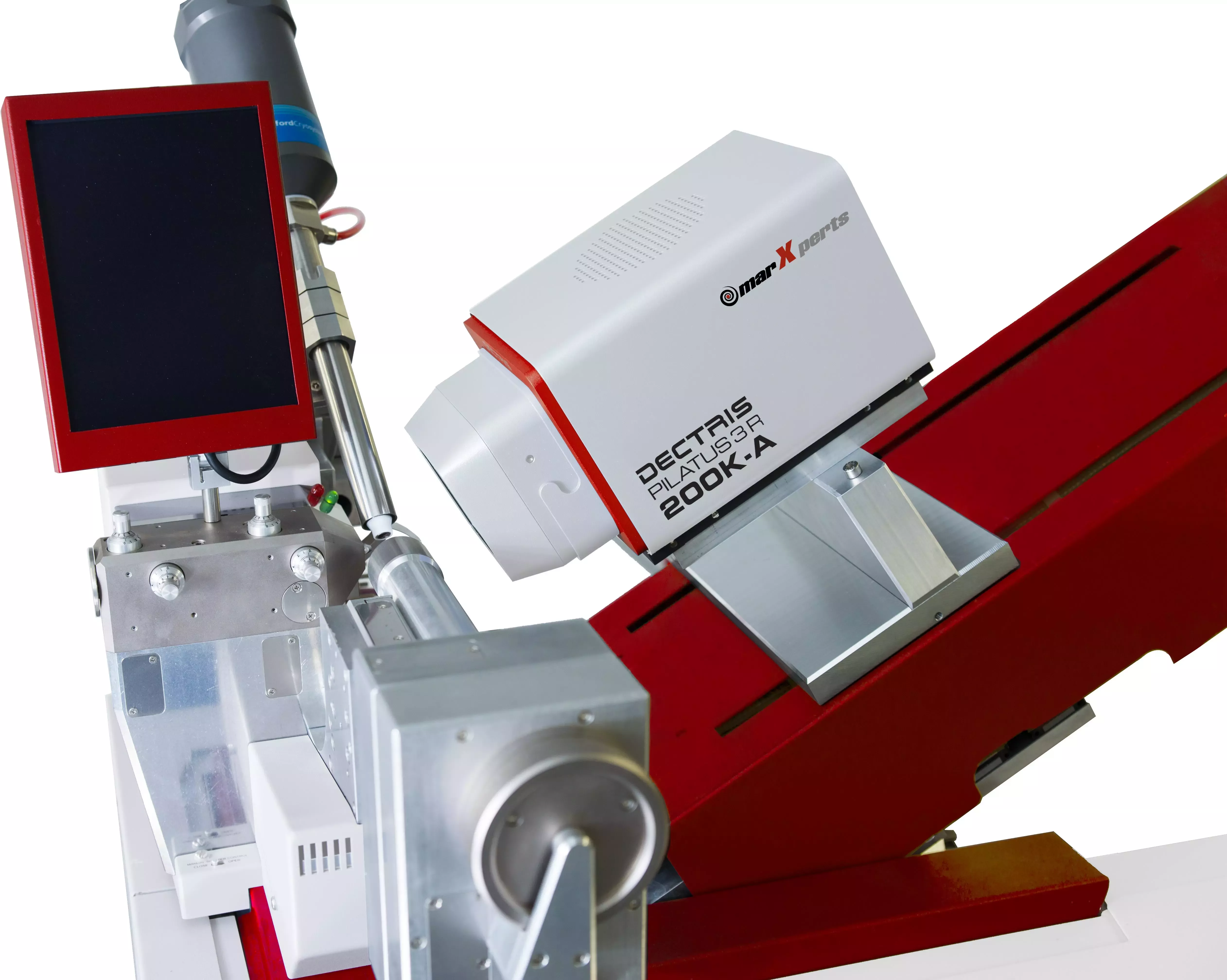PILATUS4 Hybrid Photon Counting Detectors

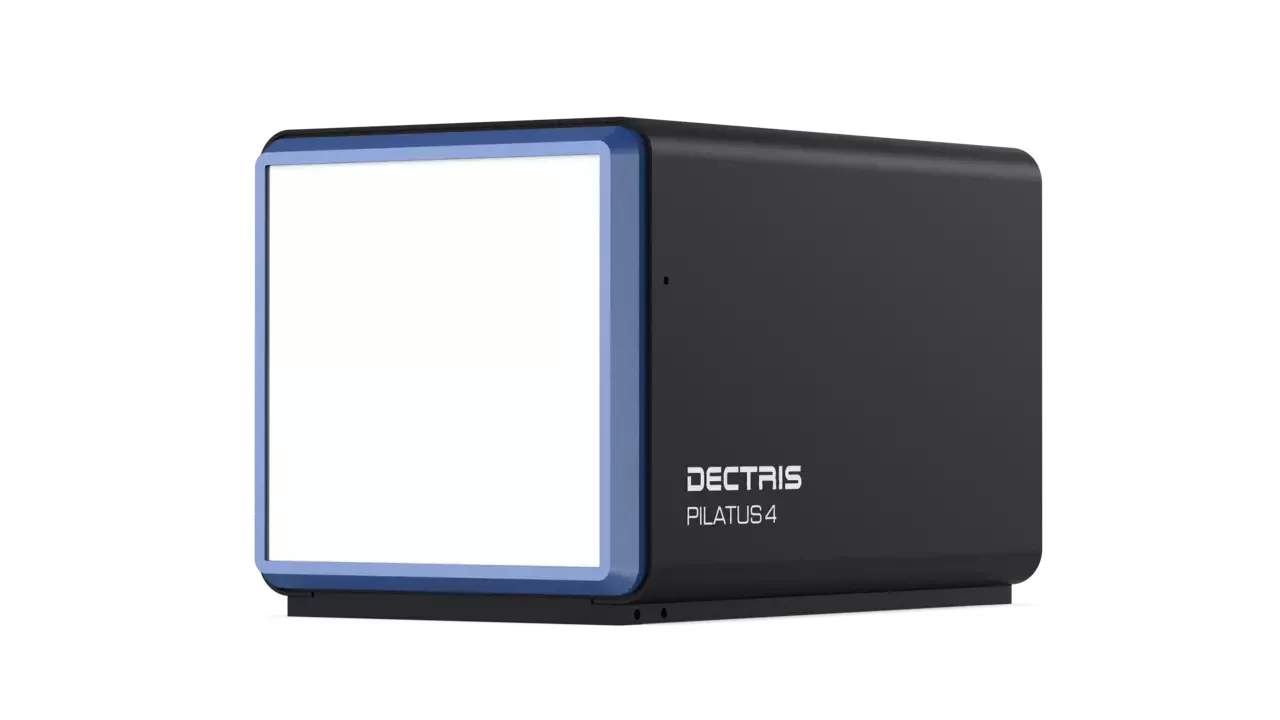
- 2 x 4 modules
- 155 x 162 mm active area
- 1033 x 1080 pixels
- 10 frames/second
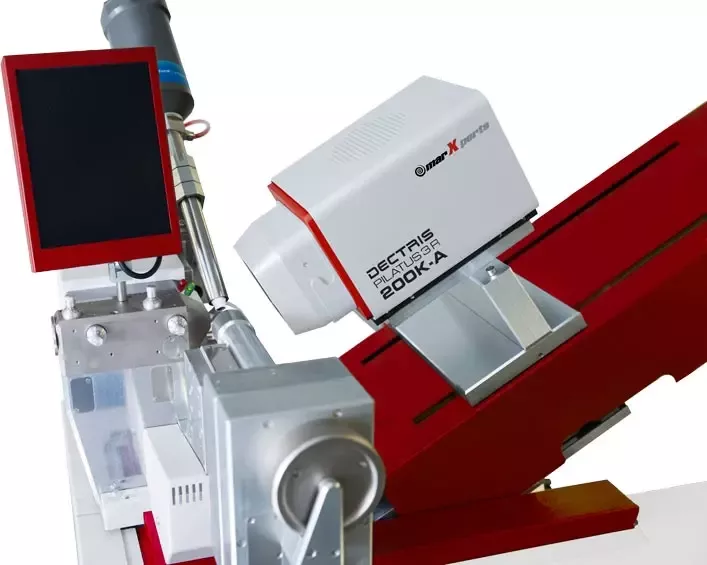
- Travel range along beam: 45 - 395 mm
- 2-theta range: 0 - 30 deg.
- Max. resolution with Cu-Ka: approx 1.1 Ang.
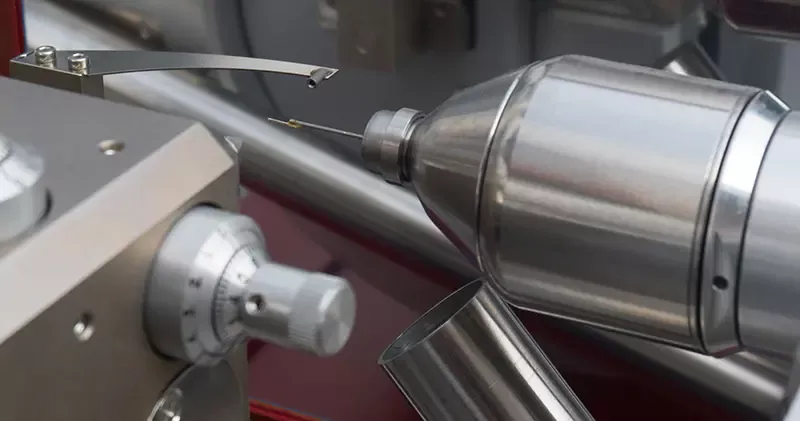
- Resolution: 0.002°
- Speed: 1°/sec
- Sphere of confusion: < 10 μm
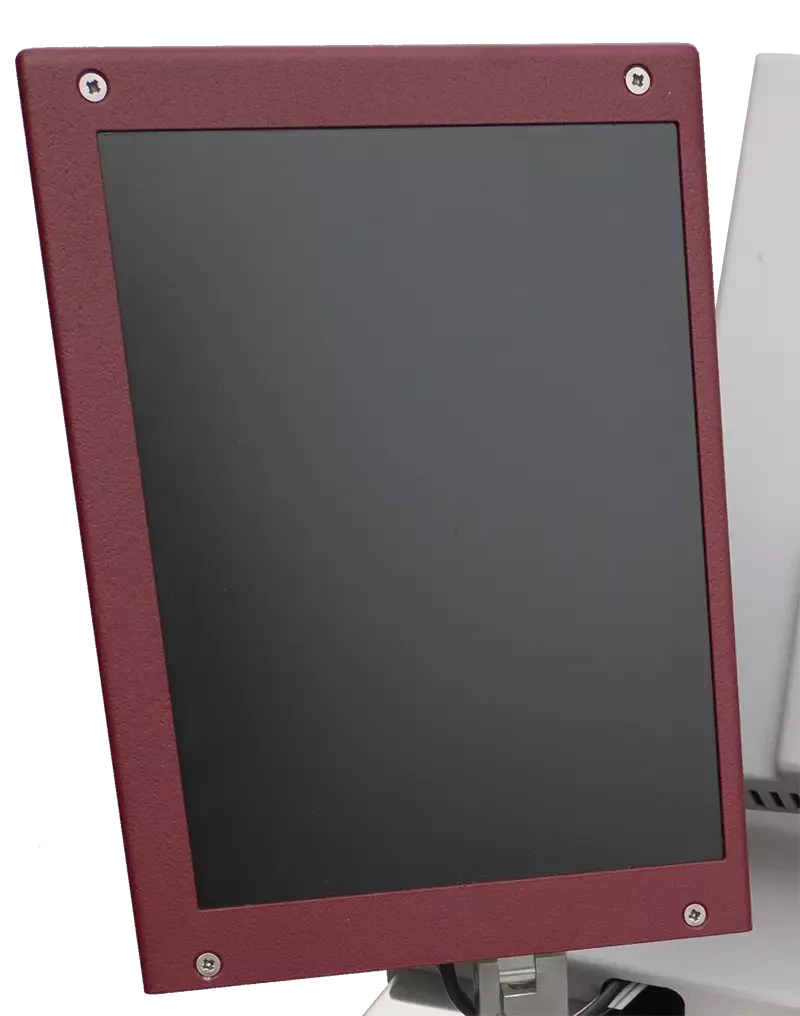
Built-in monitor (7'') for sample centering
Since its introduction the hybrid photon counting technology implemented in the detectors manufactured by DECTRIS AG, Switzerland, have become the leading technology for synchrotron applications in crystallography and other fields of X-ray diffraction. The new PILATUS4 R series of detectors have been designed specifically for home lab use. Technically, they are identical to the synchrotron versions except for a slightly smaller frame rate and will satisfy most in-house demands.
marXperts offers full support for the PILATUS4 series of detectors with our mardtb goniostat. In fact, the PILATUS4 detectors fit nicely on the mardtb and data collection is fully integrated into our well-known data collection software.
HIGHLIGHTS
CdTe SENSOR
Detectors with Si sensors suffer from lack of sensitivity when used with harder X-rays. The CdTe sensor, in contrast, works equally well with Cu, Mo, Ag or In sources.
SPEED
Continuous read-out with virtually no dead-time allows for fine φ-slicing and shutterless data collection.
PIXELSIZE
Small pixels of 150 μm
FRAME RATE
10 frames/second for 1M version, 100 frames/second for 260K version.
SENSITIVITY
Extremely high, no point-spread due to direct conversion leading to small spots with better I/σ.
NOISE
DYNAMIC RANGE
Virtually unlimited (32 bits).
CONFIGURATIONS
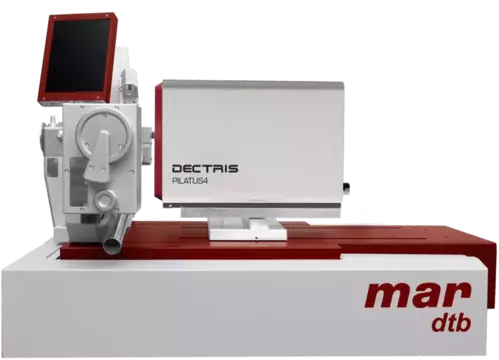 |
mar260K/1M:
The PILATUS4 R 260K or 1M detector is mounted on a mardtb goniostat. The mardtb “desktop beamline” features a fully automatic beam alignment system and more than 10 motors including an “inverted PHI” assembly and a 2-theta stage. The mar260K/1M system is a complete data collection system that can be operated with any X-ray source (sealed tubes to synchrotrons), the most cost efficient combination being the marYX3G system. |
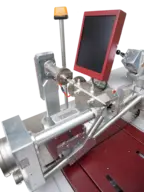 |
marYX3G:
A PILATUS4 R 260K or 1M detector with a mardtb goniostat in combination with a marµX microfocus generator. This system is the perfect choice, when cost-of-ownership and maintenance issues come into play. Despite of the low price, the system is highly suitable for fast screening experiments, but also for complete data collections of small crystals and other kinds of diffraction experiments. |
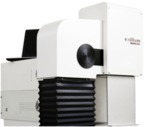 |
metaljet:
If you are aiming at the ultimate performance in the home lab, a combination of a MetalJet X-ray source with a PILATUS4 R 1M detector and a mardtb goniostat is the very best you can obtain today. Excillum's patented MetalJet technology beats any other conventional X-ray source in terms of brilliance and is a true alternative to a synchrotron. Please contact us for further details! |
UPGRADE OF mar345dtb
Existing mar345dtb detector sytems can easily be upgraded with a PILATUS4 detector, i.e. the mardtb can be used together with a PILATUS4 260K or 1M detector. When using the small PILATUS4 260K detector, it is possible to mount the detector in front of the mar345 detector. One can then easily take away the small 260K detector and use the large mar345 image plate detector if there is a need for a large detector surface.
APPLICATION NOTE
An exiting experiment has been done with a marYX2G X-ray generator system consisting of a marYS X-ray source, a mardtb goniostat and a PILATUS3 R 200K detector (the precessor of the new PILATUS4 R 260K). The setup has been used to quickly collect with a capillary mounted lysozyme crystal at room temperature. Four hours of data collection were sufficient for ab initio phasing with the SHELX package. Please see the application note AN12Mar15 for further information or download the pdf file.
Another experiment has been carried out with a PILATUS3 R 1M detector (precessor of the new PILATUS4 R 1M) mounted, again on a marYX2G X-ray data collection system. This time, a much smaller frozen lysozyme has been used for ab-initio structure solution in a similar way. Please download the pdf file mar.AN31Jul15.pdf for further information.
260K |
1M |
|
| Number of detector modules | 2 | 2 x 4 |
| Max. frame rate [Hz]: | 100 | 10 |
| Active detector area [mm]: | 83.8 x 70.0 | 155 x 162 |
| Number of pixels: | 513x 530 | 1033x 1080 |
| Read-out speed | continuous | |
| No. of energy hresholds | 4 keV | |
| Threshold range | 4-30 keV | |
| Pixel size [µm] | 150 x 150 | |
| Dynamic range |
32 bits
|
|
| Cooling | Water-cooled | |
| Outside dimensions (H x W x L) | 114x 133x 242 | 235x 237x 372 |
| Weight [kg] | 4.7 | 15 |
| CPU | Intel or AMD, ≥ 2GHz, ≥ 4-cores |
| Memory (RAM) | ≥ 8 GB |
| Disk space | ≥ 512 GB |
| Monitor: | 2560 x 1440 pixels (WQHD) or better (4K)! |
| Network card: | Dedicated >= 1 Gbit/s |
| TV-card: | Optional feature for mardtb goniometer |
| Supported OS: | Linux: Ubuntu On request: Mac OS X, Windows, other Linux flavours |
DOWNLOADS
- Outdated product flyer PILATUS3 R 1M (pdf: 1.2 MB)
- Outdated product flyer PILATUS3 R 200K (pdf: 1.2 MB)
- Manual for program mardtb (html)
- Application note mar.AN12Mar15 (pdf: 0.6 MB)
"Sulfur-SAD phasing of lysozyme at room temperature with a PILATUS3 R 200K-A detector on a marYX2G micro-beam generator" - Application note mar.AN31Jul15 (pdf: 1.4 MB)
"Sulfur-SAD phasing of lysozyme with a PILATUS3 R 1M detector on a marYX2G micro-beam generator"




